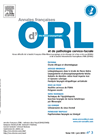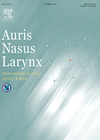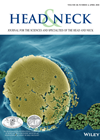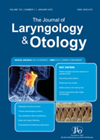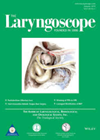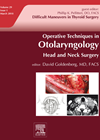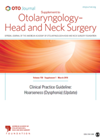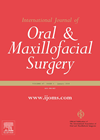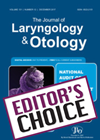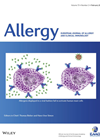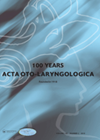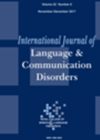
Journal Reviews
Inspiratory peak flow and tracheostomy
The evaluation of the degree of laryngeal obstruction to indicate a tracheostomy has always been a subjective decision. The authors correlated the visual laryngeal obstruction by flexible nasolaryngoscopy and the peak inspiratory flow using a pocket peak inspiratory flowmeter. Twenty-two...
Should all patients with BPPV have an MRI?
This paper describes an interesting series of 500 patients over a 10-year period with posterior canal BPPV, who had been investigated with MRI. The female to male ratio was 1.6:1 with a mean age of 56. There was a right...
The rise of AI in the head and neck clinic
There has been a huge focus in recent months on the rise of artificial intelligence (AI) in all aspects of modern life, and the head and neck clinic is no exception it appears. This paper builds on previous work to...
Diagnostic performance of non-echo-planar diffusion weighted MRI in detection of suspected cholesteatoma
Even though a ‘second look’ remains a gold standard for detection of residual cholesteatoma after intact canal wall techniques, non-echo-planar diffusion weighted MRI is considered a reasonable alternative to avoid further surgery. However, to establish or exclude a cholesteatoma de...
Which da Vinci surgical system? Novel flexible, single-port versus current multiport, rigid-arm robotic surgical system
The da Vinci robotic surgical system has transformed how oropharyngeal head and neck surgery can be delivered. The existing da Vinci Si model has challenges: the dimensions of this are larger than would be ideal for head and neck surgery...
Suspect the unsuspecting in thyroid cancer
This article reminds readers of how often invasive thyroid disease can appear, as the symptomatology is minimal. Noticeable airway symptoms appear after 50% of the airway is involved and surgeons can often fall in the unsuspecting trap of discovering locally...
Preoperative CT checklist (using the ‘CLOSE’ mnemonic) improves identification of anatomical variants for endoscopic sinus surgery
Computed tomography (CT) scans of the paranasal sinuses act as roadmaps for endoscopic sinus surgery (ESS) and careful inspection preoperatively warns the operating surgeon of critical anatomical variants. This study aimed to investigate if implementation of a pre-ESS CT checklist...
SPECT scans not justified in growth of the mandibular condyle
This is a paper from Hong Kong of 200 patients between January 2011 and July 2013 who underwent SPECT bone scintigraphy for assessment of growth causing condylar hyperplasia and subsequent mandibular asymmetry. Thirty-four patients were found to have active growth...
Role of oral and intranasal steroids in the management of otitis media with effusion
Inflammation is considered an important factor in the pathogenesis and continuation of otitis media with effusion. Theoretically, this may support the use of steroids, oral or intranasal in the management of this condition. This study comprised three well matched groups...
IL-25 and nasal polyps, another target
Immune response in chronic rhinosinusitis with nasal polyps (CRSwNP) is mainly via type 2 T-helper (Th2) cells while Th1 cells characterise chronic rhinosinusitis without nasal polyps (CRSsNP) immune response. CRSwNP is heterogeneous on a cytological level causing a varied response...
Is combined two wall decompression approach a better surgical outcome for Grave’s orbitopathy?
This retrospective study looked at the outcome of endoscopic medial wall combined with transcutaneous lateral orbital wall decompression in Graves’ orbitopathy. The following parameters were studied: reduction in proptosis; change in visual acuity and diplopia. A total of 36 orbits...
Developmental language disorder
Disorders such as attention deficit disorder (ADHD), autism spectrum disorder and developmental dyslexia have received widespread recognition. As a result, children affected by these conditions are able to receive remedial services. In this article, the author discusses the possible reasons...

